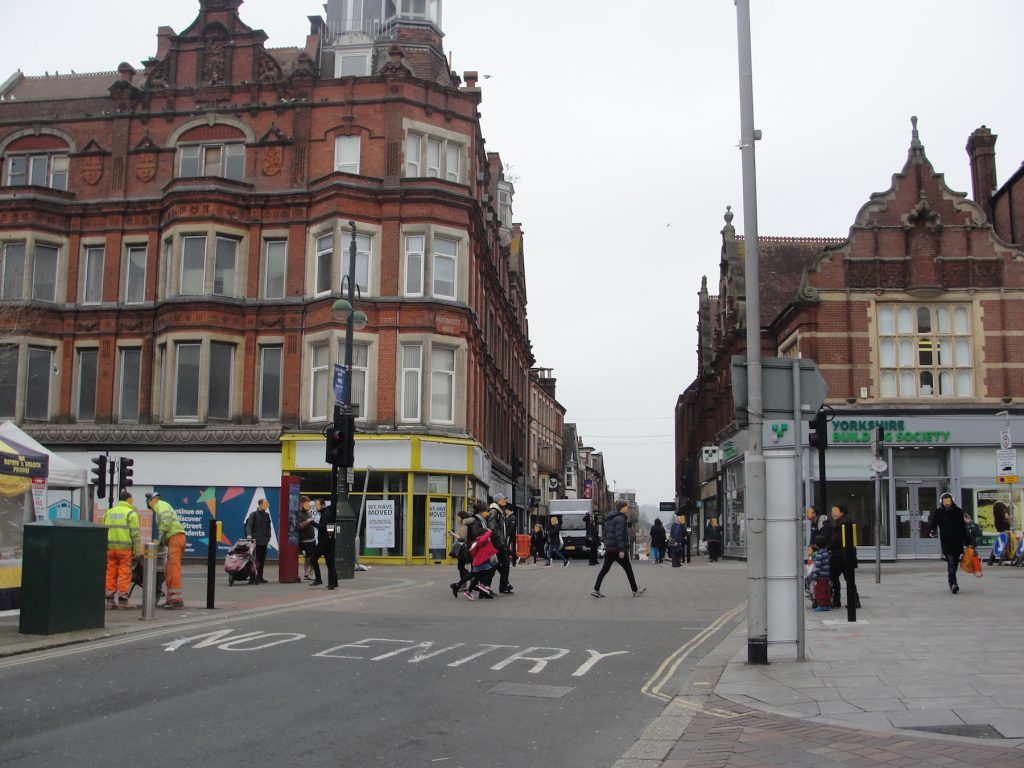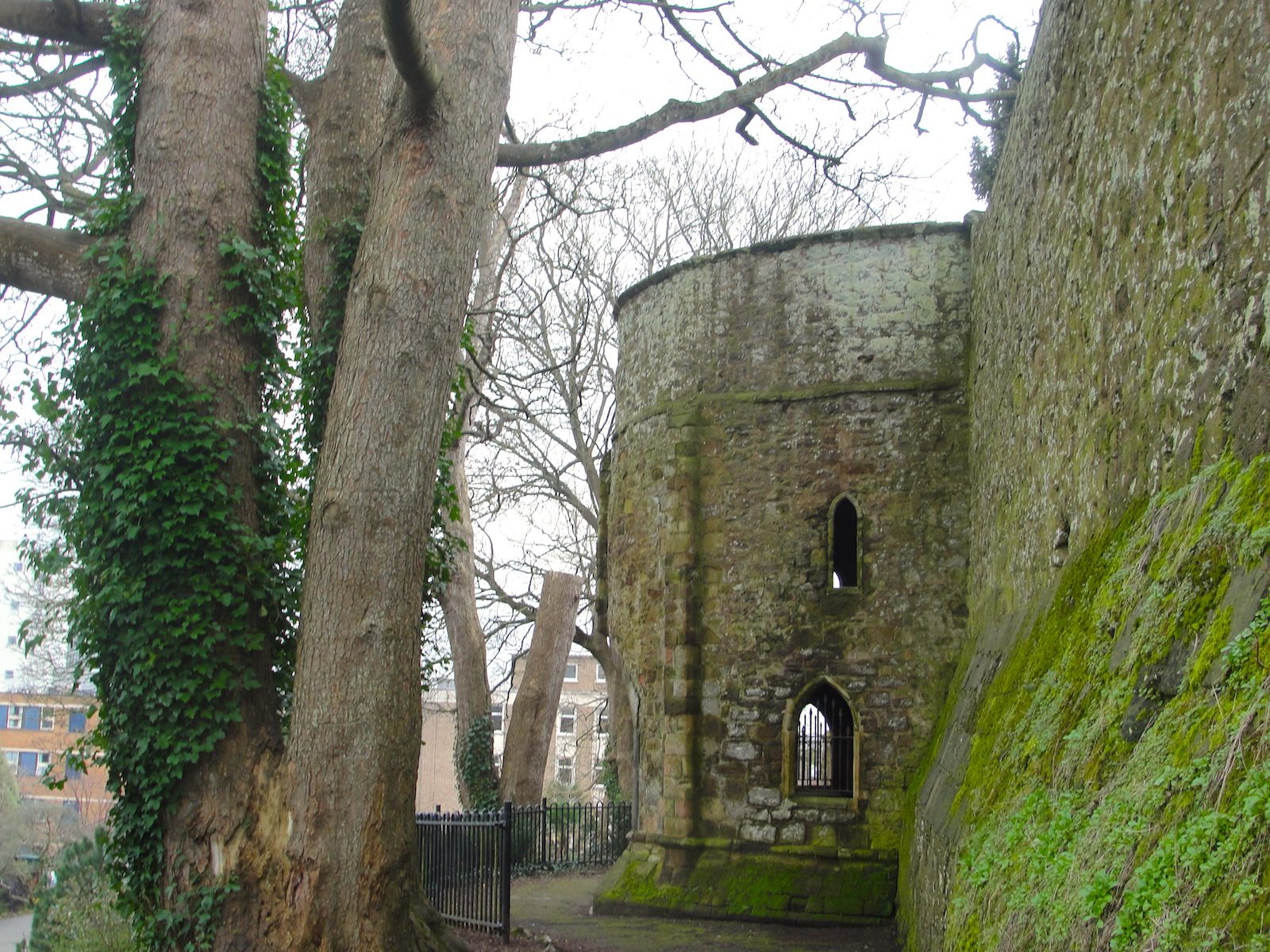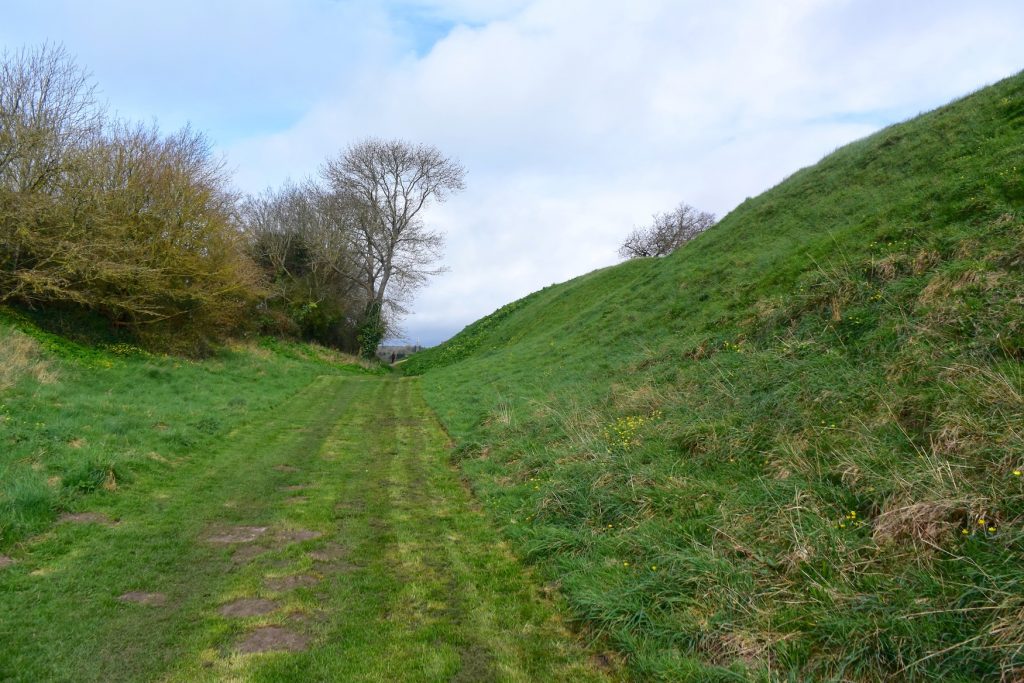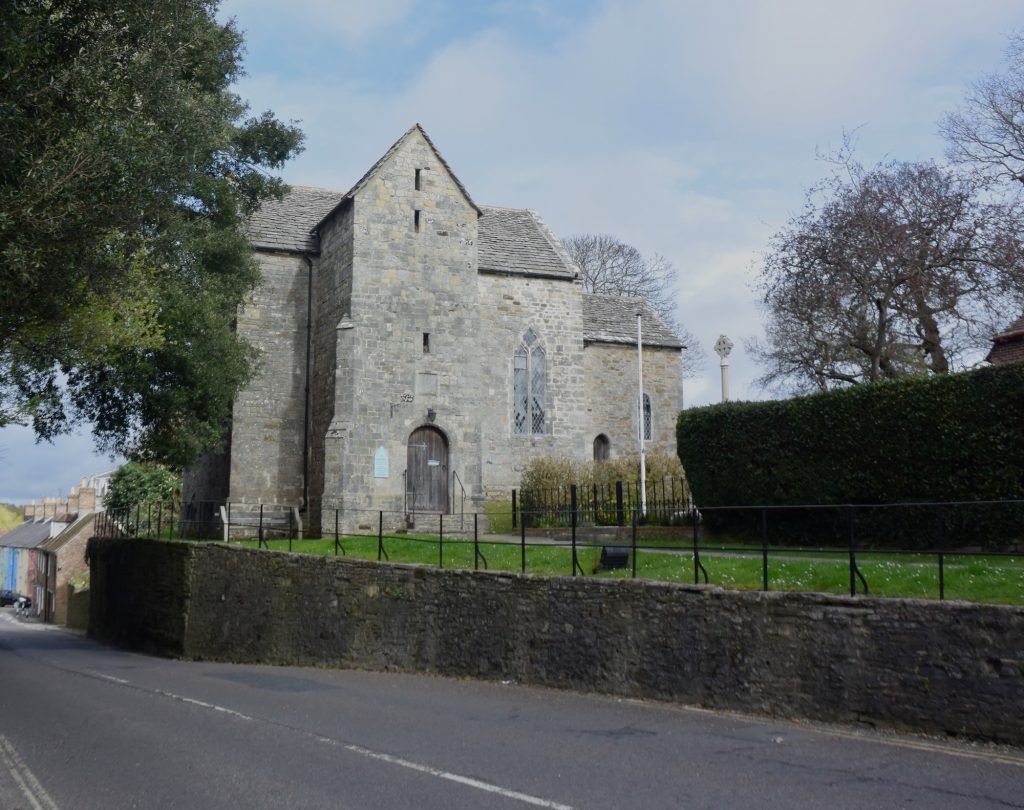This post on Saxon Exeter at the time of King Alfred is adapted from my book, King Alfred: A Man on the Move, available from Amazon. Please also scroll down for my Youtube video on Exeter.
The Anglo-Saxon Chronicles tell us that in 876 King Alfred pursued the land-based Vikings that had fled from Wareham (Dorset) to Exeter. However, their accompanying navy lost 120 ships in bad weather near Swanage (Dorset). Alfred was unable to catch up with the fleeing land-based Vikings before they got to Exeter. On reaching Exeter the Vikings secured themselves in a fortress, but their situation does not appear to have been particularly positive, perhaps because of the large loss of ships, and they settled for peace with Alfred. After over-wintering (permission to do this being presumably part of the peace settlement), the Vikings left Exeter and went to Mercia, and specifically to Gloucester according to a chronicle written by Æthelweard.
I asked myself whether it was possible to work out from the available information where exactly in Exeter the Vikings went. The Anglo-Saxon Chronicles imply that the Vikings occupied a fortress that had already been there, as opposed to building one when they got there, as they would do in Rochester, in Kent, in 884. Exeter’s Rougemont Castle goes back to 1068, so we are looking for something else, but perhaps this would have been on the same site as Rougemont Castle. The case for this is strengthened by the discovery of Anglo-Saxon masonry at Rougemont Castle.

We also know that Exeter had (and largely still has, although much repaired) Roman walls with four entrances and it appears that these were repaired and strengthened in Anglo-Saxon times. The Old English of the Chronicles says that the Vikings came into Exeter, which fits with the idea that the Vikings had managed to get into Exeter through one of the four entrances in the walls and then either occupied a fortification within the walls, or used the walls themselves as a fortification. The length of the circuit of the walls was would have stretched the Viking troops, but with only four entrances, it may have been possible for them to secure the site. I feel that it is more likely that the depleted Viking force took over a fortification within the walls rather than the walls themselves, and it seems to me that the site of (or part of the site of) Rougemont Castle would have been the most likely location for this fortification. From Northernhay Gardens elements of Anglo-Saxon construction in the remains of the wall can be seen. It is thought that King Athelstan (King Alfred’s grandson) restored the city walls in around 928. The site of Rougemont Castle is now called Exeter Castle, and is a commercial enterprise.
It is possible that the land-based Viking contingent, with Alfred in pursuit took the Roman road to Bridport via Dorchester and then the Roman road that now approximates to route of the A35 to Honiton, and then finally the Roman road that is more or less on the current route of the A30 to Exeter. Alternatively, they could have branched off this route onto another Roman road near Charmouth in order to reach Exeter via Colyford and Sidford, approximately following the route of the current A3052. It seems likely that these routes would have been in use in Alfred’s time, because much of these routes have persisted from Roman times right through to today. It also seems likely that the best available route would have been taken by both parties as, speed would have been important, and these would probably have been the remaining Roman routes.

It seems that either route would have brought them to a gate to the south-west of the walled city at a spot that is towards the southern end of South Street of today’s Exeter. There is still some wall there today (and a plaque) to help you find the precise spot. This South Gate must be, therefore, the most likely point of entry for the Vikings, and also for King Alfred in pursuit, in 876. Unfortunately, there is no gate present there now as, after serving as a prison, it was finally demolished in 1819. Nonetheless, it is possible to explore on foot how these routes come together just outside the former location of the South Gate. If you do make it down here, there are other places of interest such as the old Eye Hospital and the Dissenters’ Graveyard.


Having come through the South Gate, and with Rougemont Castle (as it was later called) at the extreme north end of the walled city, Alfred would have needed to cross the centre of Exeter. Although these events took place prior to Alfred’s post-878 rebuilding programme, it seems likely that there would have been a road leading from the South Gate up to the main city intersection where today South Street, North Street, Fore Street and High Street meet. It seems that High Street would have been present in Alfred’s time, and this leads in the general direction of Rougemont Castle. I therefore suggest that, if the Vikings were at the location of Rougemont, Alfred and his troops would have proceeded up what is now South Street and turned right on to what is now High Street, with the land-based Vikings having taken the same route just a short time before. Any surviving sea-borne Vikings would have made their way up from the harbour, via the West Gate or perhaps via a lost Roman gate in the wall nearer to the port (the Water Gate may have been a later development not present in Alfred’s time). They may have even disembarked at nearby Topsham and then made their way, like the others, to the South Gate.

There is a reference in the Anglo-Saxon Chronicles to King Alfred heading again to Exeter in 893. While on his way to assist his troops that were besieging a Viking contingent near London, he received word that other Viking forces had landed in North Devon and that Exeter, in South Devon, had also been besieged. Alfred and his troops therefore diverted towards Exeter. There are no records of any engagement with the Vikings either at Exeter or in North Devon at this time, although the Anglo-Saxon Chronicles do imply that he got there.
It is worth noting that in 1003 the Vikings stormed (the word used is abrocen) Exeter. It seems that this would have been much worse than anything that happened in King Alfred’s time (see versions E and F of the Anglo-Saxon Chronicles).
Many thanks to BBC Radio Devon and The Voice (Barnstaple) for having me on air to talk about my book and Saxon Exeter at the time of King Alfred.
There is much more about the travels of King Alfred in my book, including maps and references. Tap or click the image of the front cover below.









